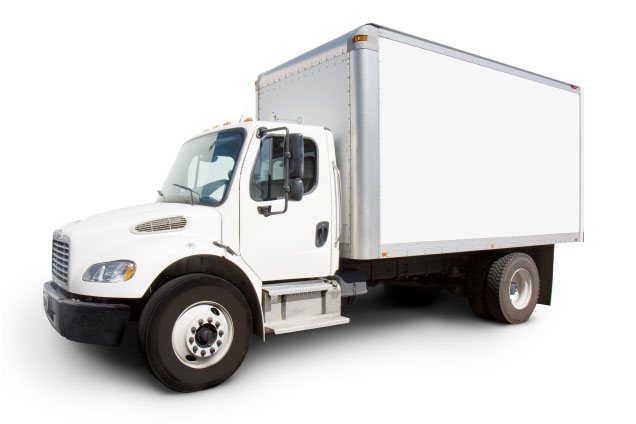How to Maintain Your Freezer When It's Not in Operation
Posted on 15/06/2025
How to Maintain Your Freezer When It's Not in Operation
A freezer is an essential home appliance, invaluable for storing food safely and efficiently. But what do you do when you need to unplug your freezer for an extended period? Perhaps you're moving, heading off for a long vacation, or simply don't require freezer storage temporarily. Many people overlook freezer maintenance when not in use, potentially leading to future problems like odors, mold growth, or component damage. In this comprehensive guide, you'll discover how to maintain your freezer when it's not in operation and ensure it stays in top condition for when you need it next.
Why Proper Freezer Maintenance Matters
Even though your freezer may be switched off, neglecting it can result in unpleasant surprises down the line. Proper freezer care during downtime ensures that your appliance remains hygienic, functional, and safe when you reactivate it.
- Prevents unpleasant odors and mold growth
- Protects internal components from rust and corrosion
- Extends the overall lifespan
- Ensures energy efficiency upon reuse

Step-by-Step Guide: How to Maintain Your Freezer When It's Not in Operation
1. Safely Remove All Stored Food Items
The first step in freezer shutdown maintenance is to clear all perishable and non-perishable items. Leaving any food inside can cause spoilage, foul odors, and attract pests.
- Sort food items into what can be used immediately or moved to another freezer/refrigerator.
- Dispose of any expired or unwanted foods appropriately.
- Do a final check to ensure nothing remains inside, including removable baskets or trays, which should also be cleaned separately.
2. Defrost the Freezer Thoroughly
*Most freezers accumulate ice build-up over time. When not operational, defrosting is essential to prevent water damage and mold growth.*
- Unplug the freezer from the wall outlet to ensure safety.
- Open the door and allow ice to melt naturally, or use the manufacturer's recommended defrost function if available.
- Place towels or shallow pans around the base to soak up excess water.
- Never use sharp objects to chip away ice, as this can damage the lining or cooling coils.
- Wipe down all surfaces after defrosting for a dry finish.
3. Clean the Interior and Exterior
Cleaning is one of the most critical steps in preserving your freezer during downtime. Even small food remnants can cause stubborn odors or mildew.
- Use a solution of warm water and mild dish soap to wipe all interior surfaces, including shelves and gaskets.
- For odor control, consider wiping surfaces with a mixture of baking soda and water.
- Don't forget the door seal: debris trapped in the seal can prevent proper closure or harbor mold.
- Rinse with a clean, damp cloth and dry thoroughly.
- Clean the exterior surfaces, paying attention to control panels and handles.
4. Dry Everything Thoroughly
Moisture is the enemy of an unused freezer. If left damp, you risk mold, mildew, corrosion, and unpleasant smells.
- Leave the door open for several hours to ensure air circulation and complete drying.
- Use a clean, absorbent towel or microfiber cloth to wipe every nook and cranny.
- Remove and dry all shelves, drawers, and trays separately before returning them to the unit.
Ensuring the freezer is bone dry is a key element in long-term freezer preservation when not in use.
5. Keep the Freezer Door Slightly Ajar
After cleaning and drying, one of the top recommendations for freezer maintenance during storage is to keep the door slightly open.
- This allows for air flow and helps prevent odors and the growth of mold or bacteria.
- Most modern freezers have a special door "storage" latch; check your user manual or simply wedge a small, clean item (such as a rolled towel) to prevent full closure.
6. Place a Desiccant or Odor Absorber Inside
Even when open, musty smells or humidity can collect inside a dormant freezer. To further enhance freezer care while not in operation, try:
- Placing a box of baking soda on a shelf
- Using a commercial desiccant or moisture absorber
- Adding an activated charcoal odor absorber
These easy solutions trap residual odors and draw out any remaining moisture from the air within the compartment.
7. Clean and Inspect the Drainage System
Some upright and chest freezers feature a drainage hole and plug for defrosted water. Before storing:
- Locate the drainage plug (check your manual if unsure)
- Remove and clean both the plug and the channel with warm soapy water
- Ensure everything is dry before reassembly
Regular inspection of the drainage system is crucial to maintain your freezer during periods of inactivity.
8. Store in a Suitable Location
The place where you keep your unused freezer can affect its longevity and safety. Follow these tips for freezer storage while not in use:
- Choose a dry, well-ventilated location (avoiding basements prone to flooding or excessive humidity)
- Keep away from direct sunlight or extreme temperatures, which may damage plastic components
- Elevate the freezer slightly off the ground if stored in garages to further prevent moisture accumulation
9. Protect the Exterior and Internal Components
- Cover the appliance with a breathable cloth or appliance cover to prevent dust buildup, but do not use plastic sheets that trap moisture.
- Check wiring and plug for damage. If storing for months, you may want to wrap the cord and secure it to avoid kinks or fraying.
Common Mistakes to Avoid When Storing a Freezer
To keep your freezer in the best possible condition while it's not running, avoid these frequent errors:
- Sealing the door shut: Lack of airflow encourages moisture and mold.
- Leaving spills or food traces inside: These decay over time and promote odors or pest infestations.
- Forgetting to clean drainage areas: This can cause leaks, rust, or corrosion after long storage.
- Covering with non-breathable fabric: Traps moisture and may lead to rust.
- Placing in a damp, low-ventilation area: Increases risk of mildew and shortens appliance life.
Preparing Your Freezer to Return to Service
Once you decide to start using your freezer again, there are a few important steps to follow to ensure optimal performance:
- Remove any odor absorbers or desiccants.
- Wipe the interior and exterior again with a clean, damp cloth.
- Let the appliance sit upright for several hours before plugging in (especially if it has been tilted or transported, to allow compressor lubricant to settle).
- Plug in and power on the freezer. Give it a few hours to reach the correct temperature before adding food.
- Watch for any warning lights or unusual noises in the first hour of operation.
- Inspect seals, drains, and controls for proper function.
Tips for Long-Term Freezer Storage and Care
- Check on your stored appliance periodically, especially in humid climates. Open the door, inspect for dust or signs of mold, and ensure nothing has fallen or changed in the surroundings.
- Maintain proper ventilation around the appliance to avoid overheating the compressor when eventually powered back on.
- Label and record the storage period. This makes it easier to keep track of how long your freezer has been inactive and when it needs closer inspection or possible service.
FAQs: How to Maintain Your Freezer When It's Not in Operation
Q: Is it okay to leave a freezer unplugged for months?
A: Yes, but it is essential to thoroughly clean, dry, and leave the door slightly open. Long-term unplugging without proper preparation can lead to internal damage, odors, and mildew.
Q: Can I simply keep the freezer shut while it's not being used?
A: Avoid sealing the freezer shut for any lengthy period--this environment fosters mold and foul smells. Always allow for ventilation, ideally by keeping the door slightly ajar.
Q: Should I remove shelves and drawers when storing the freezer?
A: It depends on space, but it's best to remove, clean, and dry them separately. Once completely dry, shelves and drawers can be replaced or stored externally to streamline the next cleaning.
Q: Is it necessary to defrost before storage even if ice buildup is minimal?
A: Yes, always defrost fully, as any retained moisture can cause rust or mold.
Q: How long before restarting should the freezer be left upright after moving?
A: Wait at least 4 hours before plugging the freezer back in--this ensures any compressor oil settles and avoids system damage.

Summary: Best Practices for Freezer Maintenance When Not in Use
- Remove all food, defrost, clean, and thoroughly dry the interior and exterior.
- Leave the door slightly ajar to maintain airflow and prevent moisture buildup.
- Store in a cool, dry, ventilated spot with a breathable cover.
- Inspect the drainage system and all parts before storage and again before using.
- Regularly check on the freezer if being stored for several months.
By following these expert guidelines on how to maintain your freezer when not in operation, you'll safeguard your investment, prevent costly repairs, and guarantee your freezer is ready and reliable when you need it again.
Related Resources
- Freezer Efficiency and Maintenance - Energy.gov
- How to Clean and Maintain a Freezer - Consumer Reports
- How to Prevent Mold in Unplugged Freezers - Hunker
Keeping your freezer properly maintained when not in use enhances its performance, hygiene, and longevity. Don't let neglect shorten the life of your appliance: follow these step-by-step freezer maintenance tips even during its downtime!





